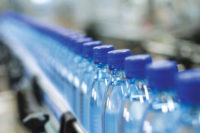How Food Packaging Can Engage Customers and Ignite Brand Interest

Image courtesy of AdobeStock/ASC Direct.
In the competitive world of food marketing, packaging plays a key role in influencing consumer choices. Eye-catching packaging not only grabs attention but also builds brand interest. We will explore the psychology behind packaging design, the growing trend of sustainable packaging and the impact of unique packaging features. By understanding these elements, businesses can better engage customers and distinguish their products in a crowded market.
The Psychology Behind Packaging
Understanding the psychology behind packaging is pivotal because of how it shapes consumer behaviour and decisions. Visual elements, tactile experiences and functionality contribute to effective packaging designs that engage and attract consumers.
Visual Appeal
The visual appeal of packaging is often the first interaction a consumer has with a product. Color plays a significant role as different hues can evoke specific emotions and associations. For instance, red can stimulate appetite and attract attention, making it a popular choice for food packaging. Similarly, green often suggests health and freshness, which appeals to health-conscious consumers. Typography and imagery are also crucial, as they can convey a brand’s personality and values in a way that connects emotionally with the consumer.
Sensory Experience
Packaging isn't just about looks – a consumer’s perception of a product can also be influenced by how it feels. Tactile features such as embossing, matte finishes or unique materials can enhance the sensory experience and make a product more memorable. These elements can subtly suggest quality and care, reinforce the product’s premium status, or they can be fun and engaging, which makes them feel approachable and appealing to a broad audience.
Convenience
Functionality plays a role in packaging design. Consumers value convenience, and packaging that is easy to open, carry and store is likely to be favored. For instance, resealable packages offer ongoing freshness, which is a practical benefit that consumers can experience directly. Similarly, designs that consider how a product is used or consumed – such as easy-pour spouts or single-serving sizes – can enhance the overall user experience, leading to increased satisfaction and repeat purchases.
Trust and Transparency
In today’s market, consumers are more informed and have higher expectations regarding product transparency. Clear labeling and the ability to see the actual product through the packaging can build trust. Transparency in packaging design reassures consumers about the quality and safety of the food they are buying and aligns with a broader preference for honesty and straightforwardness in business practices.
Sustainability and Packaging Trends
Sustainability in packaging demonstrates a significant shift in how companies approach product presentation and consumer engagement. Consumer demand for eco-friendly packaging options is rising and brands are responding to this change.
Growing Demand for Eco-friendly Options
Consumers are increasingly aware of environmental issues and their purchasing power is influencing how companies approach packaging. Many people now look for products that have minimal environmental impact and prefer packaging that is recyclable, biodegradable or made from renewable resources. This shift is pushing brands to reconsider their packaging strategies to meet both regulatory and consumer expectations.
Examples of Sustainable Packaging
Innovations in sustainable packaging include the use of plant-based plastics, mushroom packaging and recycled cardboard. For instance, some companies are adopting biodegradable packing peanuts made from starch, which dissolves in water to reduce waste. Others are using recycled paper or bamboo for their packaging solutions. These materials not only help reduce the organization’s ecological footprint but also cater to the growing consumer preference for sustainability.
Impact on Brand Perception
Adopting sustainable packaging can enhance a brand’s image. Brands that are seen as responsible and mindful of their environmental impact can attract a loyal customer base that values ethical considerations. This can lead to increased market share among environmentally conscious consumers. Moreover, sustainable practices can differentiate a brand in a crowded marketplace and provide a competitive edge.
Engaging Through Uniqueness
Uniqueness in packaging design is a powerful tool to engage consumers and make products stand out on crowded shelves. Distinctive designs and integration with digital technology can captivate customers and enhance their interaction with brands.
Distinctive Designs
Creating a unique packaging design involves more than just visual appeal. Well-designed packaging needs to capture the essence of the brand and resonate with consumers on a personal level. Unconventional shapes, interactive elements and storytelling through packaging can enhance product appeal. For instance, a bottle shaped like the fruit juice it contains not only attracts attention but also reinforces the product's natural qualities and could make it more memorable. Packaging that incorporates clever, practical innovations, such as easy-dispense mechanisms or stackable features, adds value that consumers appreciate and remember.
Personalization
Personalization in packaging goes beyond placing a consumer's name on a product. It can involve customizing packaging to reflect consumers' preferences or lifestyles, which can greatly increase engagement. For example, packaging that features artwork from local artists or designs that reflect local culture and tastes can make consumers feel a special connection to a brand. This approach not only personalizes the experience but also strengthens the consumer’s relationship with the product.
Integration with Digital Technology
Packaging that incorporates digital elements offers a new layer of interaction. QR codes, for instance, can be printed on packages to give consumers access to exclusive content and detailed product information. This technology can transform static packaging into an engaging, multimedia experience. For example, scanning a QR code might reveal a video about how the product is made or offer recipe suggestions using its contents. Such digital integrations meet the modern consumer's expectation for information and interactivity and can enhance their engagement with the product.
Eye-catching, sustainable and unique packaging plays a critical role in attracting customers and fostering brand loyalty. As the market evolves, successful brands will likely continue blending aesthetic appeal with ethical considerations to drive innovation in food and drinks packaging, and create designs that captivate with minimal environmental impact.
Looking for a reprint of this article?
From high-res PDFs to custom plaques, order your copy today!







